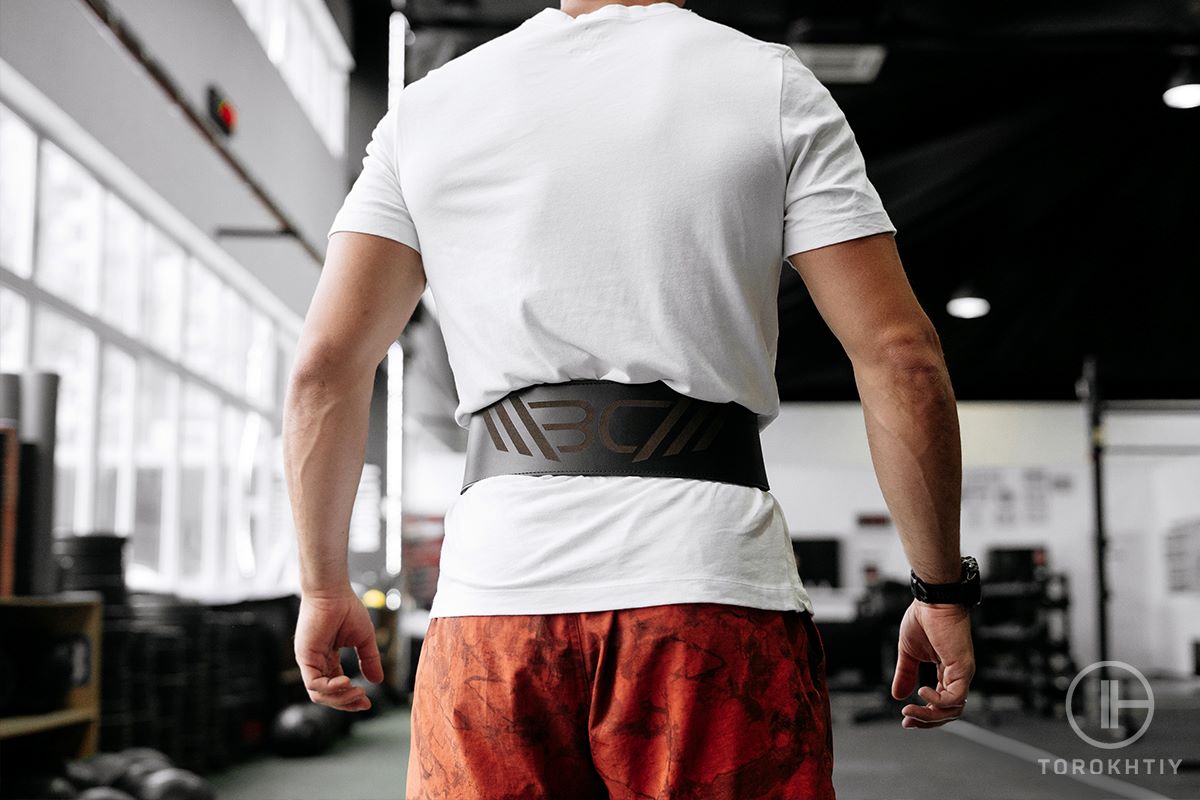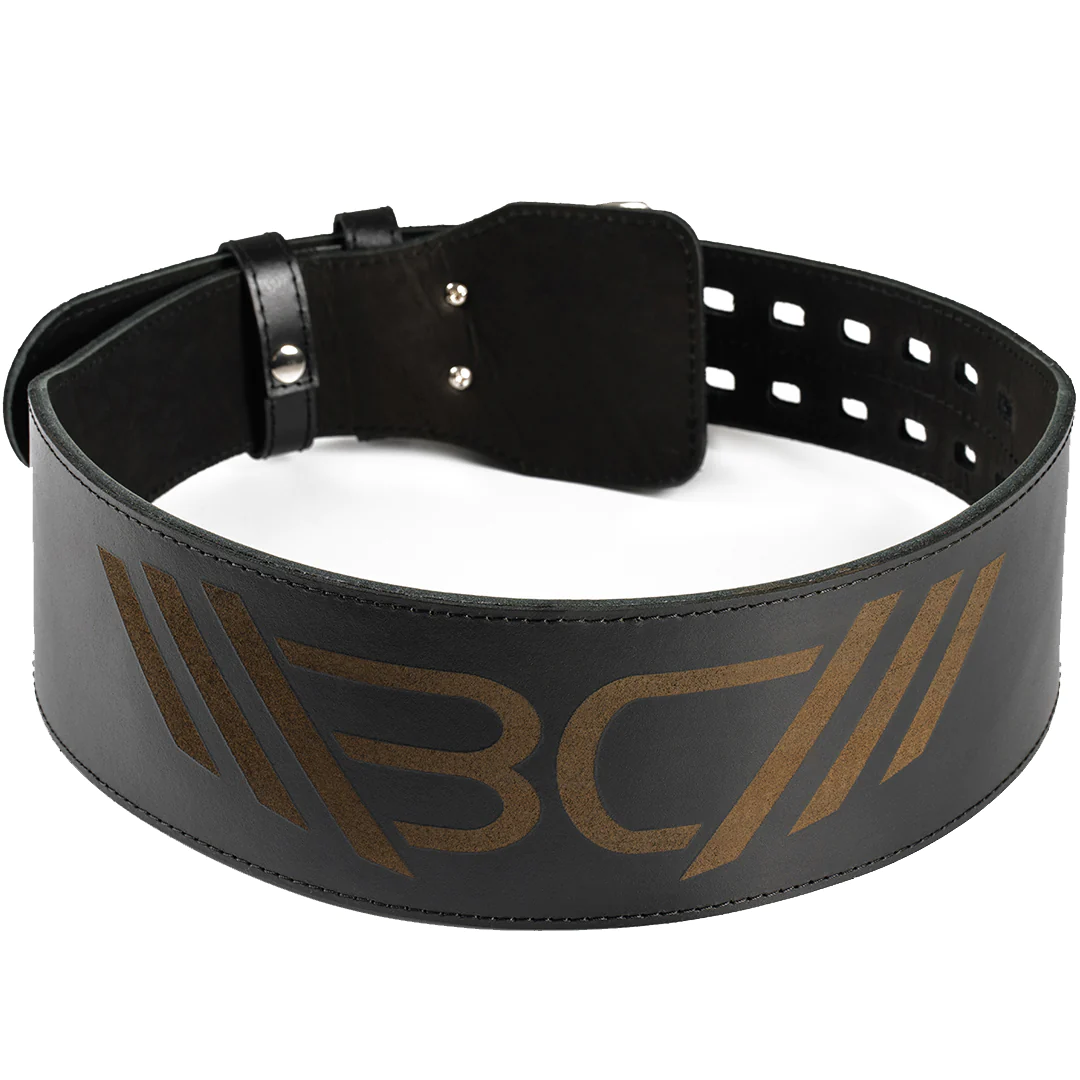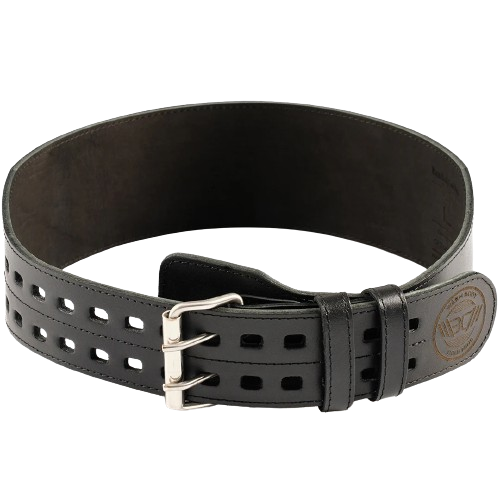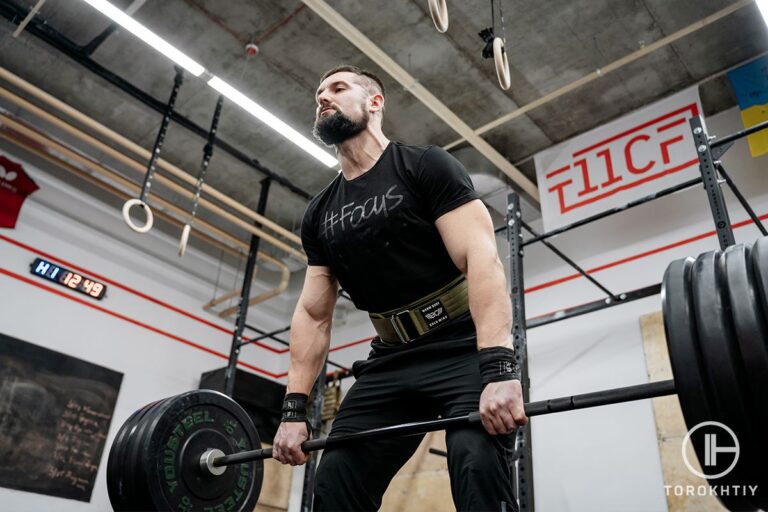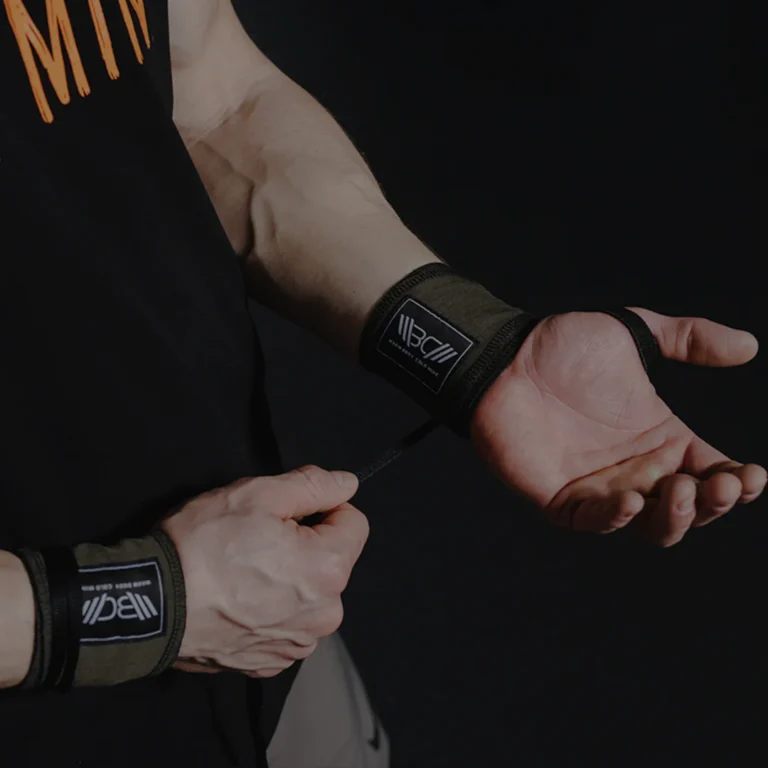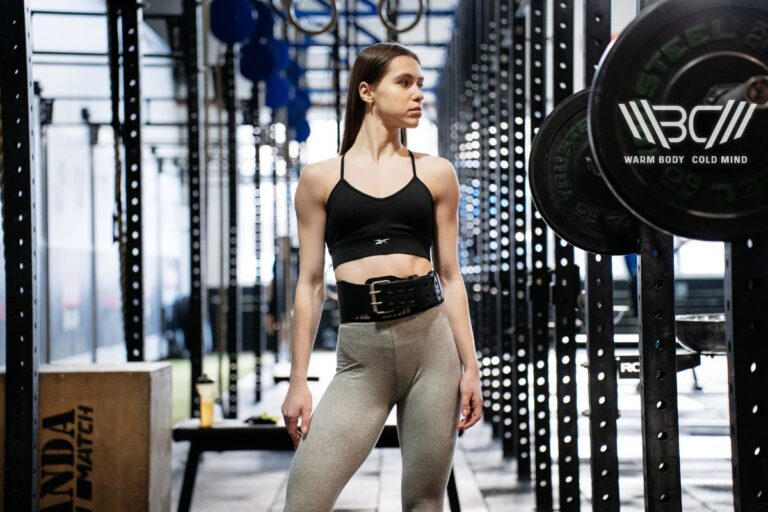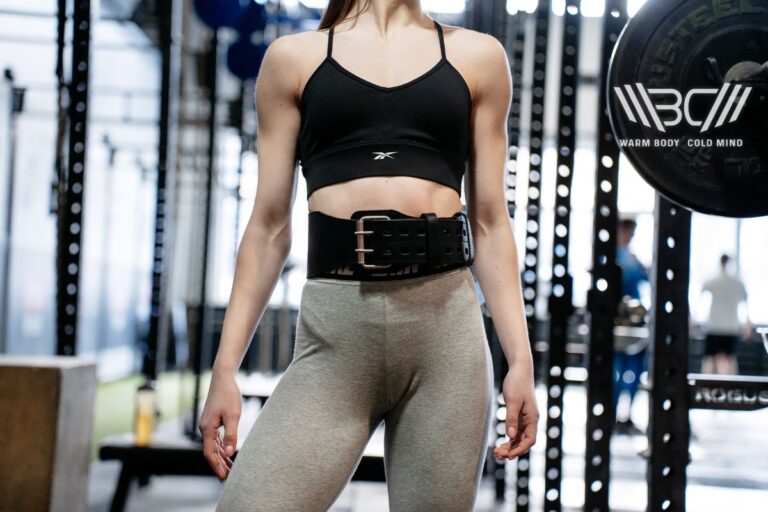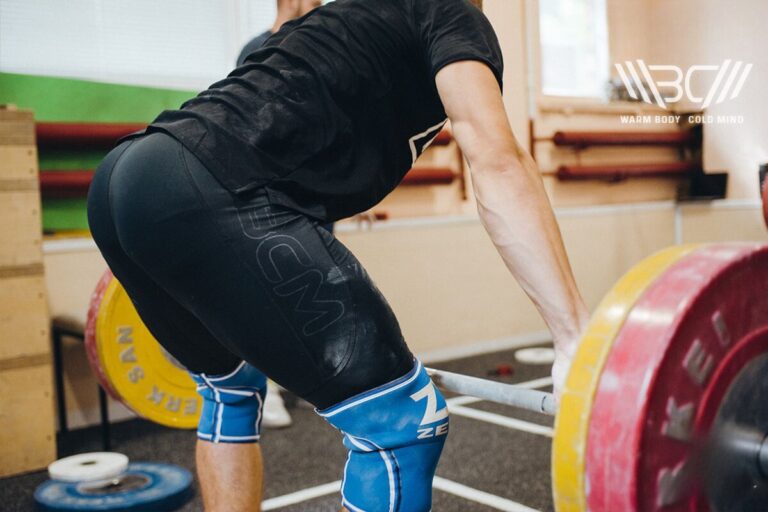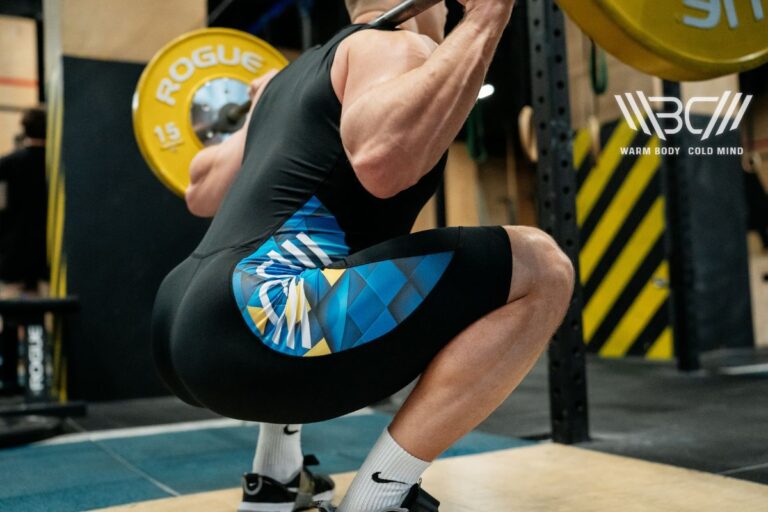How Tight Should a Weightlifting Belt Be?
Belts are among a few lifting accessories proven to boost performance and safety. Increasing intra-abdominal pressure (IAP), stabilizing the spine, and reducing spinal compression and injuries are some of the widely acknowledged benefits of using a lifting belt. However, it’s no magic.
A belt serves as a cue to flex your abs and maintain truncal tension throughout the lift. The key here is to get the fit right. So, how tight should a weightlifting belt be?
How Tight Should a Weightlifting Belt Be? – A lifting belt’s tightness should vary with the type of belt you wear and the exercises you perform. However, generally, you should leave about a finger-width space between your skin and the belt, so you can fully breathe and brace your abdomen against it while lifting.
What Are the Factors That Affect Belt Tightness?
The accurate fit is crucial for getting desired benefits in a comfortable manner. An evaluation of belt usage by baggage handlers concluded that 58% of users give up due to the rubbing, pinching, and bruising of ribs.
Multiple factors determine a belt’s tightness besides how much of the strap you pull to the other side. Even at the same setting, different types of belts may vary in the level of tightness and security. Thus, you must account for the following details.
1. Belt Material
Manufacturers have tried several materials, and the majority of belts are still made of leather or nylon. Leather classics rank at the top when it comes to rigidity, thickness, and durability. It feels even tighter early on. Leather conforms to your body shape once broken in, giving the belt a more anatomical fit with unchanged tightness.
Nylon – being a flexible and slim fabric – is generally preferred for lighter loads and cross-training. It isn’t as restrictive as leather. To sum up, nylon belts trade off some support and stiffness for comfort.
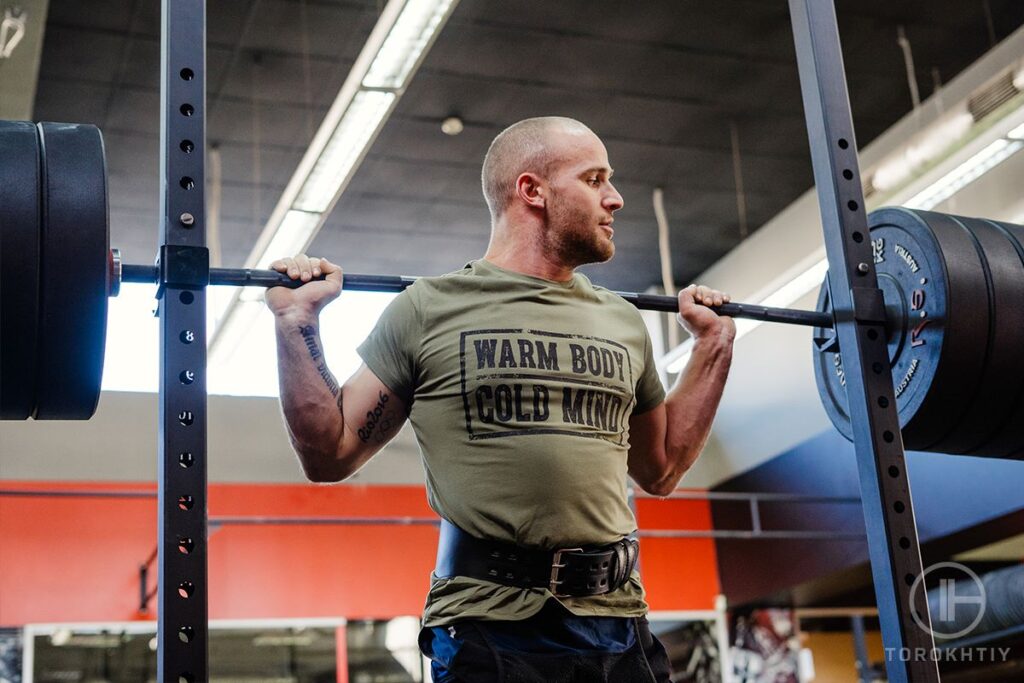
2. Belt Size
The thicker and wider a belt is, the more snug it feels. It’s simply because your abdomen has more material to push against. Belts come in various dimensions, and the most popular are 10 mm or 13 mm thick and 4” or 6” wide. Bigger belts are tapered from the front, but they cover more of your lower back, which increases tightness.
However, a 10 mm/4” variant will do great unless you smash hundreds of pounds regularly. The movement (dynamic vs static) also entails how tight should a lifting belt be to accommodate a complete range of motion.

Enhance your strength training with Warm Body Cold Mind leather weightlifting belt providing exceptional support and durability.
3. Closure Type
Buckle type is an important factor in overall belt tightness. Single and double prongs are famous as they’re easy to adjust and take off. On the other hand, a lever belt is the tightest and most secure fastening mechanism in the market, but you can’t adjust it on the spot.
You might like to loosen or tighten it up for upcoming sets and sessions. Lastly, many nylon belts feature velcro grips. They are very adjustable but prone to wear out and come off under stress; thus, they are suitable for beginners.
Tips for Determining How a Belt Should Fit
How should a lifting belt fit? The following tips will help you understand how to buy and put on a belt with optimal tightness. You don’t want it to hurt or droop like a fashion piece. The rule of thumb is that you should be able to fit in and slide a finger between your torso and the belt prior to bracing.
1. Get the Right Size for Your Frame
If you don’t already own a belt, correctly size up yourself to avoid fitting problems. Stand in front of a mirror. Get the hold of a measuring tape. And wrap it around your abdomen from your belly button. You’ll have a number to reference against the manufacturer’s size chart.
2. Leave Some Wiggle Room
Your core must have enough space to expand fully inside the belt. Fasten it in place, not hitting down your ribs or hips. Then, practice the 2B Technique, also called the Valsalva maneuver. It includes breathing and bracing, which creates pressure in your abdominal cavity.
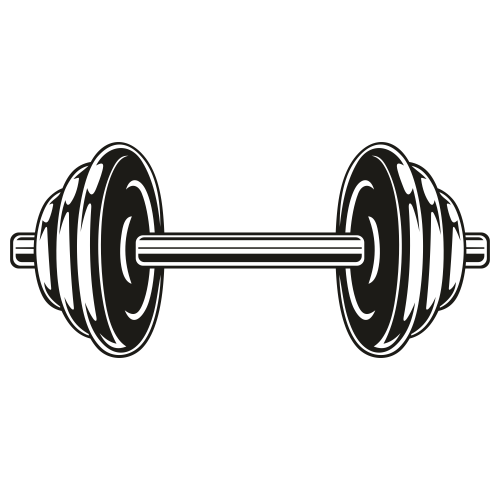
Pro Tip:
3. Balance the Support and Brace
A tight belt may keep your breaths shallow. On the other hand, if it’s too loose, the support will be sacrificed because your back and belly won’t touch the belt’s walls even when fully exhaled. Therefore, you want the golden mean, which is a trial-and-error thing. Try breathing and bracing in several fits to note the difference.
4. Adapt According to the Situation
Lastly, there is no fixed tightness — you should be ready to adjust. Some moves demand constant bending or twisting of the torso, while others are more static, like squat and overhead press. Your waist size itself can fluctuate as well, so you can’t go for a similar fit all the time.
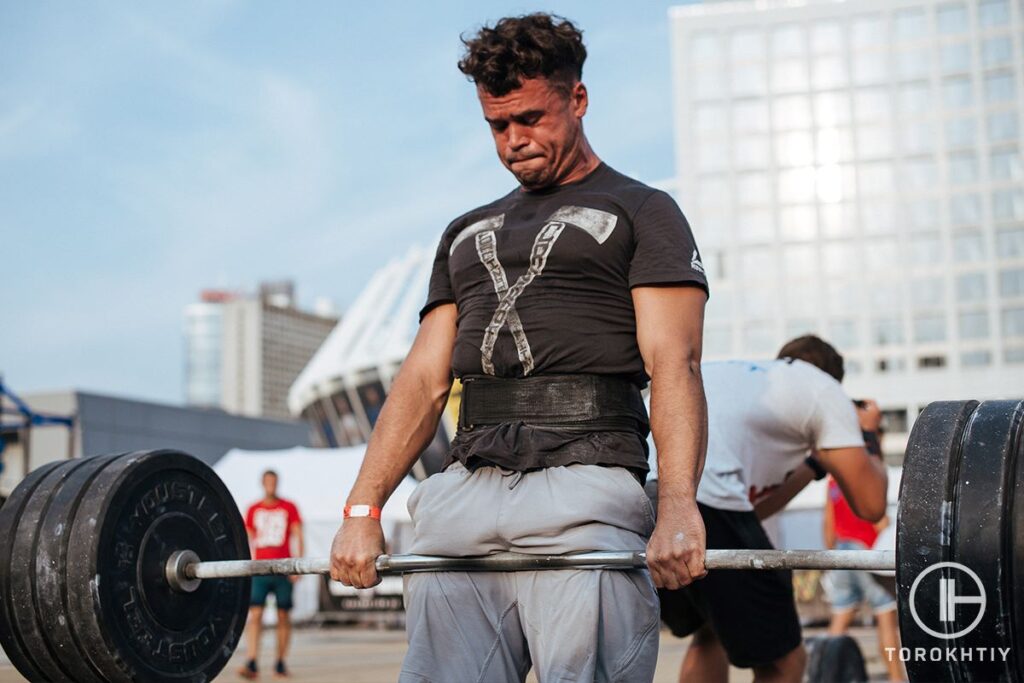
Are There Risks if a Belt Is Too Tight?
There are potential downsides to wearing a belt too tight. For instance, it can restrict your breathing and bracing, and you won’t have any expected gains. Remember, it’s not the belt that helps you max out but your ability to brace the abdominals properly. Strapping up only reminds you to do so since you have to activate all your core muscles to fill out the belt.
Moreover, a tight belt acts as a tourniquet for your digestive organs. Too much compression can lead to heartburn and acid reflux – a condition where stomach contents move up instead of downward. Lifting belts have also been found to increase heart rate and blood pressure.
People with a compromised cardiovascular system should employ extra caution. However, these all are symptoms of high overtightening. Nevertheless, a belt by no means is supposed to be an elegant and comfy piece of clothing at all times.
“For the most part, belts are not comfortable. Belts start off being very stiff and can take some time to be broken in. Expect to get some bruising on the top of your hipbone or along your ribs from the belt digging into you during the process,” wrote three-times world record powerlifter Greg Nuckols.
Belt Tightness: 3 Mistakes to Avoid
A weightlifting belt becomes a must-have for professional athletes as well as weekend warriors once they start moving big weights. However, most people fail to use them as intended. Let’s review common mistakes associated with the use and fit of a lifting belt.
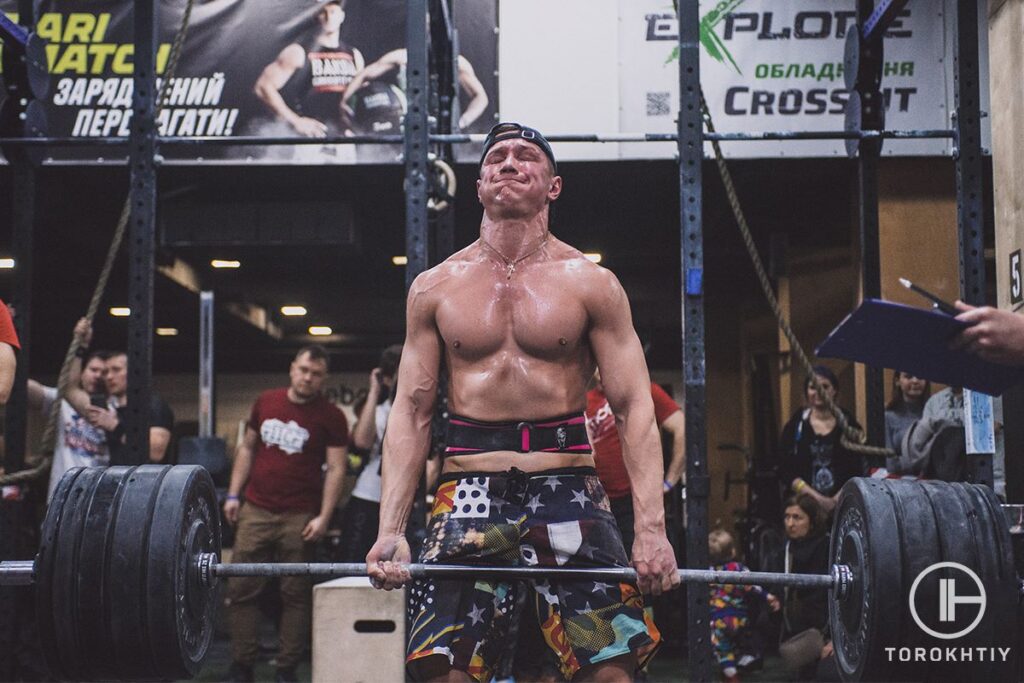
1. Not Leaving Room to Breathe and Brace
The biggest mistake is to clasp your belt while exhaling or sucking in the stomach. You need space for your core muscles to expand inside the belt. Overtightening can constrict your diaphragm, thus blocking proper abdominal brace and tension. It can result in failed 1RM attempts or even injuries and accidents.
Desiring to get that X-shaped physique with a tiny and chiseled waistline isn’t wrong, but strangling your core with a belt sure is! Remember to take a deep diaphragmatic breath, pushing out your belly while strapping up for bulky lifts.
2. Ignoring Bloating or Digestive Issues
Bloating is a feeling of fullness and pressure that can cause discomfort in the abdominal area. It’s different from, although mostly coincides with, distension which visibly increases abdomen size. These small changes can occur even on a single day, and you must account for them whenever wearing a belt.
Sometimes, you may feel nauseous or acidic, where tightening up can cause discomfort. Being realistic with yourself is important for a fitness-centered lifestyle. However, consult a doctor if you regularly experience gastrointestinal issues.
Changing the tightness of velcro and prong belts takes little to no effort. So how tight should a lever belt be since you can’t adjust them immediately? Well, you can try to be consistent with your eating habits and workout timing.
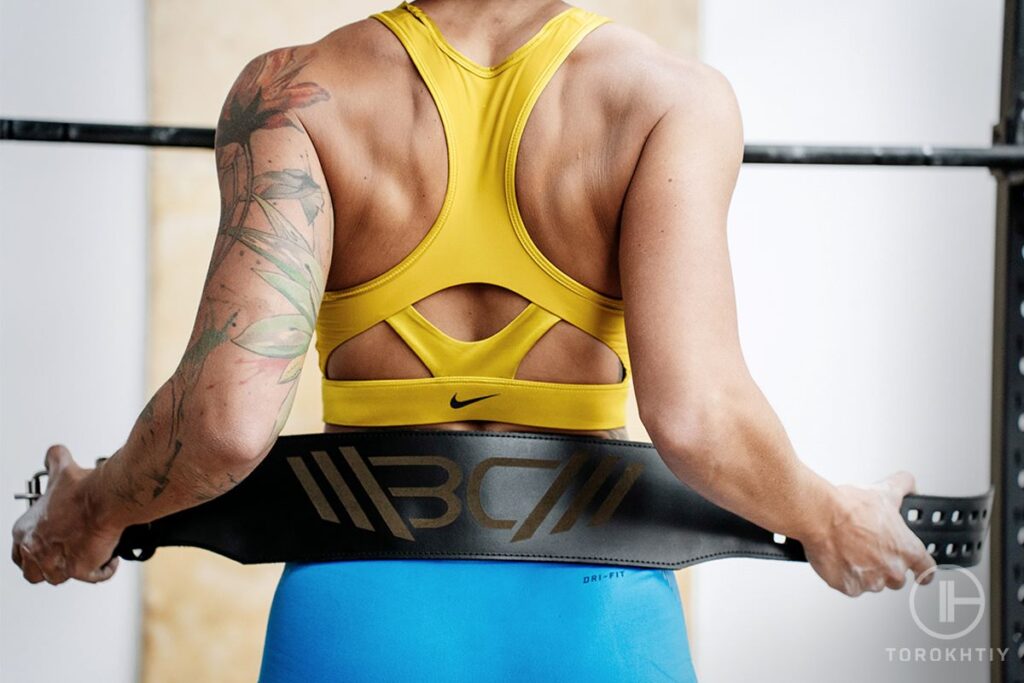
3. Overreliance on Belts for Lifting Routine
It’s not a tightness-related error but a general mistake. Research indicates that belted lifts take less time to complete, improving lifters’ explosive power without altering overall technique or muscle activity. Still, you should never be eager to put on a belt. Reserve it for maximal attempts (over 80% of your 1 RM).
Beltless training will develop your bracing technique in the absence of external cues. If you can rest and roam around buckled up between sets, it’s probably not tight enough, and you’d be better off putting it aside.

Pro Tip:
When Would You Want a Looser Fitting Belt?
A loose fitting will be helpful during high-intensity dynamic exercises where you breathe heavily or transition from one movement to another. Additionally, wearing a belt may feel uncomfortable on your midsection. Activities where you have to bend over to pick up the weights would benefit from a looser fitting belt.
In the same way, evening and post-meal sessions may require loosening the belt one or two notches down to factor in bloating. On the contrary, static or single-plane movements allow you to go tighter for enhanced spinal stability and trunk rigidity.
Subscribe!
The latest reviews of must-have home gym training equipment, apparel, and supplements that will enhance your performance and bring you new results.
Will a Tighter Belt Allow You to Lift More Weight?
The ergogenic effects of a belt don’t come from its tightness, unlike knee wraps. A lifting belt is effective only due to the increased IAP, which forms a rigid load-sharing cylinder through abdominal muscles. If IAP fails to rise sufficiently during lifting, the risk of low back injury is greater due to lumbar instability.
Too tight a belt is counterproductive since it blocks proper breathing and bracing. Tightness should be regulated according to the given scenario on the day. Below is the breakdown by exercises.
1. How Tight Should a Lifting Belt Be for Snatches?
Snatching is one of the most dynamic lifts, asking you to break the bar off the floor and lift it overhead in one seamless motion. Having a belt with a loose fit will stay out of your movement’s way. Opting for a flexible fabric like nylon with a velcro attachment may also be a good choice here.
2. How Tight Should a Lifting Belt Be for Clean and Jerk?
A clean and jerk is the primary Olympic lift besides snatches. It’s also dynamic but significantly loads your spine. Weightlifters must do a front squat to bring the weight up to the chest (clean) before taking it above the head (jerk). Therefore, a fit slightly tighter than you’d prefer with snatches should mitigate spinal stress.
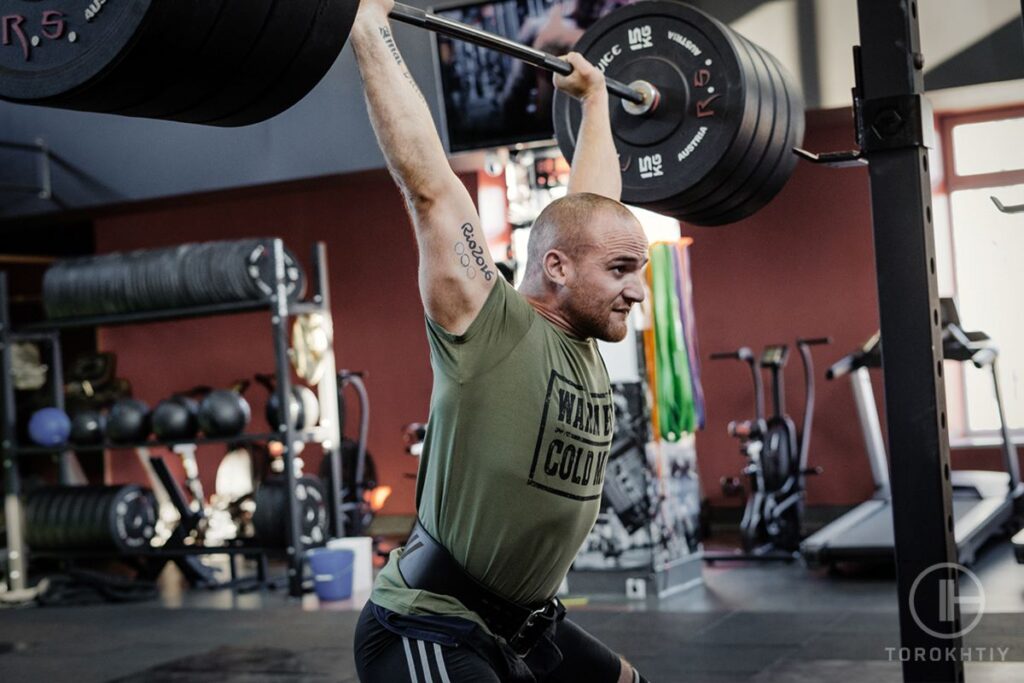
3. How Tight Should a Lifting Belt Be for Squats?
Most lifters go toward the tighter side when strapping up for squats – especially with low-rep, high-load schemes. Also, the belt is generally placed lower on the torso. However, tightness and placement vary with each individual. You should leave enough space for your abdomen to expand fully at the bottom of the lift.
“One study recorded belted vs beltless squats. IAP rose from 26.8 to over 29 kPa while back compressive forces reduced by 10-20 %. Heavy belts offered more back support than lighter belts with a slight dip in IAP generation.”
4. How Tight Should a Lifting Belt be for Deadlifts?
Deadlift is all about raw power. But it’s based on the hinging pattern, where you have to bend to pick up the barbell. Keeping the belt as snug as with squats may make you feel really uncomfortable. Try loosening up and wearing it higher under the ribcage to counter restriction while deadlifting.
5. How Tight Should a Lifting Belt Be for Bench Press?
Benching with a belt on is debated. Not all (but most) lifters approve of this practice. You can go pretty tight to press while lying flat.
We know that belts recruit trunk musculature, which in turn stabilize serratus anterior and shoulder rhythm. Thus, better arch support and shoulder positioning aren’t unheard of! Nevertheless, you wouldn’t see as drastic improvement in your bench PRs as with belted squats and deadlifts.
Our Recommendation for the Lifting Belt – Warm Body Cold Mind Leather Weightlifting Belt
The heavy-duty WBCM Leather Weightlifting Belt is a top choice for beginners to buffs. It comes with a 4″ width, tapered front, six different sizes, and a double-prong fortified buckle.
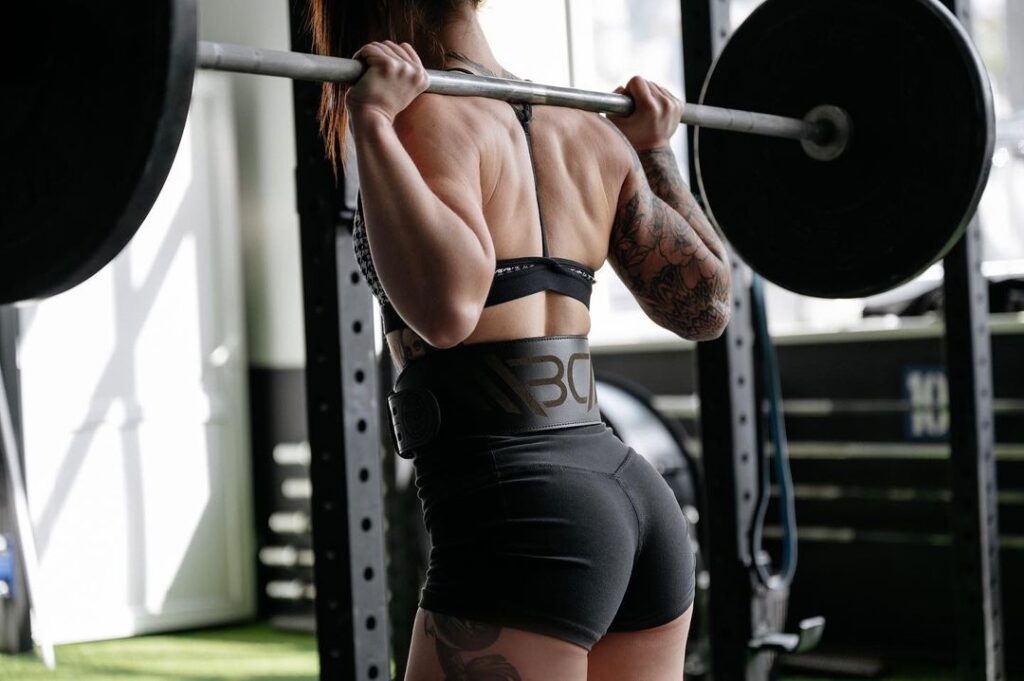
The belt is crafted from 100 % premium leather and is 6-mm thick all around. It’s a durable yet versatile belt for all your lifting needs. One downside is that 28” is the smallest waist size allowed. Adding an XS variant can do wonders for this marvelous product.
FAQ
Do You Have to Break in a Lifting Belt?
Lifting belts do have a break-in period, especially thicker (13 mm) and leather models. However, you won’t have to do anything special. Just wear your new belt regularly, and it will ease off. Storing them rolled up and bending in all directions can also expedite the process.
Mark Rippetoe, a legendary strength coach and author, shows how to break in stiff belts in this video.
Is a Lever Belt Tighter Than a Prong Belt?
Yes, a lever closure generally feels tighter than a prong one. It offers consistent support, security, and fit. However, the choice boils down to tightness vs adjustability. Lever belts can’t be tightened or loosened as quickly as inserting a pin one notch up or down.
Will a Tighter Belt Protect My Spine From Injury?
Spinal stability is driven by IAP. Having a tighter belt doesn’t guarantee injury prevention of any sort. You should maintain a fit that’s not too tight to restrict breathing or too loose to extend support.
How Do I Know When to Wear My Belt While Lifting?
Wear your belt for maximal lifts (five rep max or above 80 % of your 1 RM). Additionally, compound exercises like Oly and powerlifting moves are most suitable to be performed with a belt. Your warm-ups and light sets should remain beltless.
Conclusion
How tight should a weightlifting belt be? The exact answer depends on your body shape, belt type, and selected exercises. In any case, it shouldn’t be brutal enough to hamper the respiratory and digestive systems. Not to say that you should be able to sport it comfortably as any other article of clothing during resting times.
Do you use a lifting belt? There are multiple choices regarding material, thickness, and closure. So, what does your belt look like? And for which exercises do you wear it? Share with us in the comment section!
References:
- A. J. Zink, W. C. Whiting, W. J. Vincent, A. J. McLaine, “The Effects of a Weight Belt on Trunk and Leg Muscle Activity and Joint Kinematics during the Squat Exercise,” Journal of Strength and Conditioning Research 15, no. 2 (2001): 235-240.
- Brian E. Lacy, David Cangemi, Maria Vazquez-Roque, “Management of Chronic Abdominal Distension and Bloating,” Clinical Gastroenterology and Hepatology 19, no. 2 (2019): 219-231.
- Cheryl R. Reddell, Jerome J. Congleton, R. Dale Huchingson, John F. Montgomery, “An Evaluation of a Weightlifting Belt and Back Injury Prevention Training Class for Airline Baggage Handlers,” Applied Economics 23, no. 5 (1992): 319-329.
- Daniel A. Hackett, Chin-Moi Chow, “The Valsalva Maneuver: Its Effect on Intra-Abdominal Pressure and Safety Issues during Resistance Exercise,” Journal of Strength and Conditioning Research 27, no. 8 (2013): 2338-45.
- David R. Mitchell, Mohammad H. Derakhshan, Angela A. Wirz, Stuart A. Ballantyne, Kenneth E. L. McColl, “Abdominal Compression by Waist Belt Aggravates Gastroesophageal Reflux, Primarily by Impairing Esophageal Clearance,” Gastroenterology 152, no. 8 (2017): 1881-1888.
- Gary R. Hunter, John McGuirk, Nancy Mitrano, Paul Pearman, Bruce Thomas, Richard Arrington, “The Effects of a Weight Training Belt on Blood Pressure During Exercise,” Journal of Strength and Conditioning Research 3, no. 1 (1989): 13-18.
- J. E. Lander, R. L. Simonton, J. K. Giacobbe, “The Effectiveness of Weight-Belts during the Squat Exercise,” Medicine & Science in Sports & Exercise 22, no. 1 (1990): 117-26.
- Navpreet Kaur, Kunal Bhanot, Lori Thein Brody, Jennifer Bridges, David C. Berry, Joshua J. Ode, “Effects of Lower Extremity and Trunk Muscles Recruitment on Serratus Anterior Muscle Activation in Healthy Male Adults,” The International Journal of Sports Physical Therapy 9, no. 7 (2014): 924-937.
- S. J. Legg, “The Effect of Abdominal Muscle Fatigue and Training on the Intra-Abdominal Pressure Developed during Lifting,” Ergonomics 24, no. 3 (1981): 191-195.
- Shirley S. M. Fond, Louisa M. Y. Chung, Yang Gao, Jeff Chak Wai Lee, Tak Ching Chang, Ada W. W. Ma, “The Influence of Weightlifting Belts and Wrist Straps on Deadlift Kinematics, Time to Complete a Deadlift and Rating of Perceived Exertion in Male Recreational Weightlifters,” Medicine 101, no. 7 (2022): e28918.
Author: Sergii Putsov
PhD in Sport Science, Olympic weightlifting, Strength & Conditioning coach and fitness expert
Sergii Putsov is a professional weightlifter with over 20 years of experience and multiple national medals. He was a member of the National weightlifting team, competing in the 94 kg weight class. Sergii holds a master’s degree in Olympic & Professional Sport Training and a Ph.D. in Sport Science. After his athletic career, Sergii transitioned into coaching and is now responsible for designing training programs, writing blog articles, providing live commentary for international weightlifting competitions, and hosting sport and fitness seminars worldwide.

